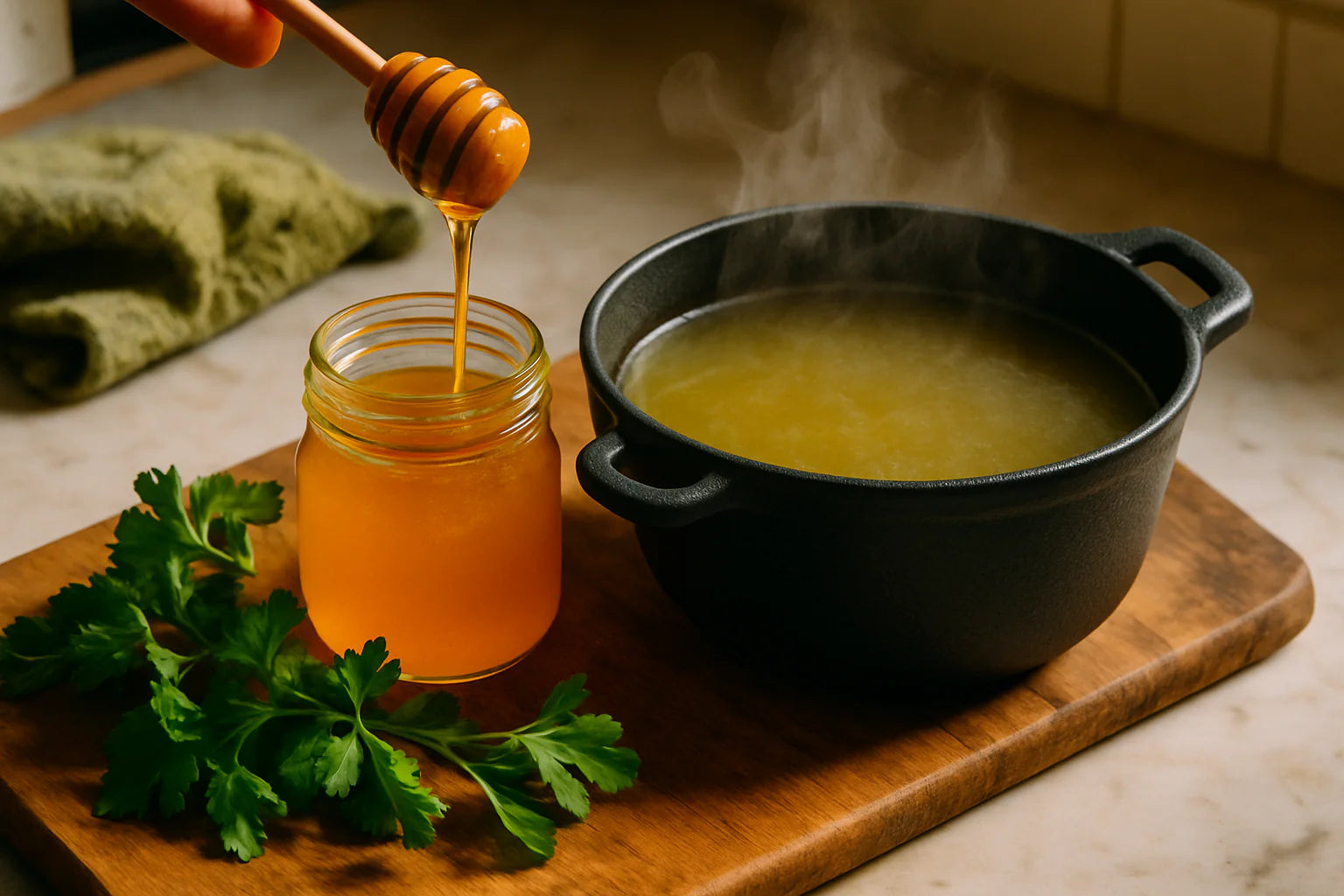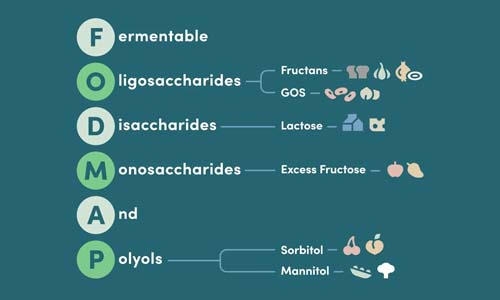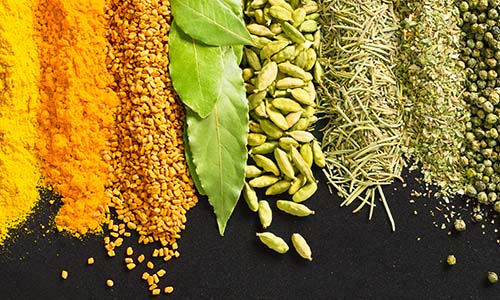Is Honey Low FODMAP? The Complete 2025 Guide

If you're managing IBS or following a low FODMAP diet, you've probably wondered whether you can still enjoy honey's natural sweetness. The short answer: honey is high FODMAP for most serving sizes, but the complete picture is more nuanced than you might expect.
Key Takeaways
- Honey is generally considered high FODMAP because of its high fructose content.
- Small amounts of honey, typically one teaspoon or less, may be tolerated by some individuals with IBS.
- Individual tolerance to honey varies significantly among people following a low FODMAP diet.
- Most serving sizes of honey are high FODMAP and may trigger symptoms in sensitive individuals.
- The relationship between honey and FODMAP intolerance is more nuanced than a simple yes or no answer.
Table of Contents
- Understanding FODMAPs and Digestive Health
- Navigating High and Low FODMAP Foods
- Sweeteners and FODMAP Classification
- Honey and IBS: Is Honey Low or High FODMAP?
- How Honey May Affect IBS Symptoms
- Practical Tips: Including Honey in a Low FODMAP Diet
- Frequently Asked Questions About Honey and FODMAPs
- Advanced Strategies for Natural Sweetness
- Conclusion: Making Informed Choices About Honey
With nearly 1 billion people worldwide living with IBS and two-thirds of Americans experiencing digestive issues, understanding which sweeteners work for sensitive stomachs has never been more important. Let's dive into what the research tells us about honey, FODMAPs, and your digestive comfort. For a broader overview of FODMAPs and digestive health, you may also find this Monash University resource helpful.
Understanding FODMAPs and Digestive Health
Before we explore honey specifically, let's establish what FODMAPs are and why they matter for digestive wellness. If you want to learn more about the science and practicalities of FODMAPs, check out our FODMAP blog for in-depth articles and tips.
FODMAPs are fermentable oligosaccharides, disaccharides, monosaccharides, and polyols—short-chain carbohydrates that are poorly absorbed in the small intestine and known to trigger symptoms in people with IBS.
When these compounds reach your large intestine undigested, they become food for gut bacteria. While this fermentation process is normal, it can cause uncomfortable symptoms like bloating, gas, abdominal pain, and changes in bowel movements for those with sensitive digestive systems.
The Five Main Types of FODMAPs
- Fructose
- A simple sugar found in fruits, honey, and high fructose corn syrup. When present in excess of glucose, it can trigger symptoms.
- Lactose
- The sugar in dairy products that requires the enzyme lactase for proper digestion.
- Fructans
- Found in wheat, garlic, onions, and many other foods. These are chains of fructose molecules.
- Galacto-oligosaccharides (GOS)
- Present in legumes and some nuts, these are complex sugars that can ferment in the gut.
- Polyols
- Sugar alcohols like sorbitol and mannitol, found in stone fruits and sugar-free products.
The primary FODMAP of concern in honey is fructose, specifically what researchers call "excess fructose"—when fructose levels exceed glucose levels in a food.
Navigating High and Low FODMAP Foods

Understanding the broader FODMAP landscape helps put honey's classification into context. Here's how common foods stack up:
Fruits: FODMAP Breakdown
| High FODMAP Fruits | Low FODMAP Fruits | Reason |
|---|---|---|
| Apples, pears, mangoes | Cantaloupe, kiwi, oranges | Excess fructose vs. balanced sugars |
| Cherries, watermelon | Pineapple, blueberries | Fructose and sorbitol content |
| Dried fruits | Fresh citrus fruits | Concentrated sugars vs. natural balance |
Vegetables and Aromatics
This is where our expertise at Gourmend Foods really shines. Traditional cooking relies heavily on high FODMAP aromatics like garlic bulbs and onions, but we've discovered that the green parts of scallions, chives, and leek tops deliver incredible flavor without the digestive discomfort. For more inspiration on using these ingredients, try our Ultimate Low FODMAP Frittata recipe.
- High FODMAP vegetables: Artichoke, asparagus, cauliflower, garlic bulbs, onion bulbs, mushrooms (except oyster mushrooms)
- Low FODMAP alternatives: Eggplant, green beans, bok choy, bell peppers, carrots, chives, scallion greens
Grains and Proteins: A FODMAP Guide
When it comes to building gut-friendly meals, grain and protein choices matter significantly:
Smart Swaps: Instead of wheat-based products (high in fructans), opt for quinoa, rice, or oats. These grains form the foundation of many recipes in our low FODMAP recipe collection.
- Low FODMAP grains: Oats, quinoa, rice, corn
- High FODMAP grains: Wheat, rye, barley products
- Low FODMAP proteins: Most meats, fish, eggs, firm tofu
- High FODMAP legumes: Kidney beans, split peas (in large amounts)
Here's something interesting: many foods that are high FODMAP in large quantities can be enjoyed in smaller portions. For example, lentils become low FODMAP when you stick to 1/4 to 1/3 cup servings.
Sweeteners and FODMAP Classification
This brings us directly to honey and other sweeteners—a category that often surprises people with its complexity. For a practical look at how to use sweeteners in low FODMAP cooking, our Low FODMAP French Vinaigrette recipe is a great place to start.
You might be wondering: "If honey is natural, why would it cause digestive issues?" The answer lies in its specific sugar composition, not whether it's natural or processed.
High FODMAP Sweeteners to Watch
- Honey: High in excess fructose
- High fructose corn syrup: Concentrated fructose
- Sugar-free confectionery: Contains polyols like sorbitol and mannitol
- Agave nectar: Very high fructose content
Low FODMAP Sweetener Alternatives
Based on research and testing, these sweeteners are gentler on sensitive digestive systems:
"When we developed our Gourmend broths and seasonings, we focused on ingredients that deliver maximum flavor without digestive compromise. The same principle applies to sweeteners—choose options that work with your body, not against it."
- Table sugar (sucrose): Equal parts glucose and fructose
- Maple syrup: Lower fructose ratio than honey
- Rice malt syrup: Glucose-based sweetener
- Brown sugar: Similar composition to white sugar
The difference between these sweeteners isn't about being "natural" or "processed"—it's about the specific ratio of sugars and how your digestive system processes them.
Understanding this foundation sets the stage for exploring honey's specific FODMAP profile and how it might fit into your digestive wellness journey. In the next section, we'll dive deep into the research on honey, including specific testing results and serving size guidelines that can help you make informed decisions about including this beloved sweetener in your diet.
Honey and IBS: Is Honey Low or High FODMAP?

Quick Answer: Honey is high FODMAP due to its excess fructose content, but very small amounts (typically 1 teaspoon or less) may be tolerated by some people with IBS.
Here's where the science gets specific. Honey's FODMAP classification isn't a simple yes or no—it depends on the type of honey, serving size, and your individual tolerance levels. For a clinical perspective on honey and IBS, see this Healthline article summarizing the latest research.
FODMAP Content Breakdown in Honey
Honey is primarily composed of fructose and glucose, but the ratio matters significantly for digestive comfort:
Honey contains approximately 38% fructose and 31% glucose, creating an "excess fructose" situation that makes it high FODMAP for most serving sizes.
- Primary FODMAP: Fructose in excess of glucose
- Secondary concerns: Some honey varieties contain minor amounts of fructans
- Variable factor: FODMAP content varies significantly between honey types and sources
- Processing impact: Raw vs. processed honey can have different FODMAP profiles
About one-third of people have fructose malabsorption, which means their small intestine struggles to absorb fructose efficiently. For these individuals, even small amounts of honey can trigger symptoms like bloating, gas, and abdominal discomfort.
Laboratory Testing Results: Monash University Data
The gold standard for FODMAP testing comes from Monash University, the research institution that developed the low FODMAP diet. Here's what their laboratory analysis reveals about honey:
| Honey Type | Low FODMAP Serving | High FODMAP Threshold | Notes |
|---|---|---|---|
| Generic honey | 1 teaspoon (7g) | Above 1 teaspoon | Most common variety tested |
| Clover honey | ½ teaspoon (3g) | Above ½ teaspoon | Lower tolerance threshold |
| Avocado honey | 1g only | Above 1g | Very limited safe serving |
Important Note: Some independent laboratory tests suggest that certain honey varieties may not have any "safe" low FODMAP serving size, highlighting the importance of individual testing and tolerance assessment.
What Makes Honey Problematic for IBS?
The issue isn't that honey is inherently "bad"—it's about how your digestive system processes excess fructose:
- Incomplete absorption: When fructose exceeds glucose in a food, your small intestine can't absorb it efficiently
- Bacterial fermentation: Unabsorbed fructose travels to your large intestine where gut bacteria ferment it
- Gas production: This fermentation produces gases that can cause bloating and discomfort
- Water retention: The process can also draw water into your intestines, potentially causing loose stools
"In our experience working with customers managing IBS, we've found that understanding the 'why' behind ingredient restrictions helps people make better choices. It's not about avoiding honey forever—it's about understanding your personal tolerance."
How Honey May Affect IBS Symptoms
The relationship between honey and IBS symptoms is complex. While honey can trigger digestive discomfort, it also offers some potential benefits that make the conversation more nuanced.
Honey's Potential Benefits
Research suggests honey may offer several health benefits, even for those with sensitive digestive systems:
- Anti-inflammatory properties: Natural compounds in honey may help reduce inflammation in the digestive tract
- Antibacterial effects: Certain honey varieties contain compounds that support beneficial gut bacteria
- Antioxidant content: Raw honey provides antioxidants that support overall health
- Prebiotic potential: Some animal studies suggest honey might support beneficial gut bacteria growth
Manuka honey, in particular, has gained attention for its antimicrobial and anti-inflammatory effects. However, this doesn't change its FODMAP classification or make it more suitable for people with IBS.
Risks and Symptom Triggers
For people managing IBS, honey's high fructose content can trigger a cascade of uncomfortable symptoms:
You might experience bloating, gas, abdominal pain, and changes in bowel movements within 2-6 hours of consuming honey, especially in amounts larger than the tested low FODMAP servings.
- Immediate symptoms (30 minutes - 2 hours)
- Bloating, gas, stomach gurgling as undigested fructose begins fermenting
- Delayed symptoms (2-6 hours)
- Abdominal pain, cramping, and potential changes in bowel movements
- Individual variation
- Symptoms can vary significantly based on your fructose malabsorption severity and overall gut health
The FODMAP Stacking Concern
Here's something crucial that many people don't realize: even if you stick to "low FODMAP" serving sizes of honey, you can still trigger symptoms through a process called "FODMAP stacking."
FODMAP Stacking: When you consume multiple low FODMAP servings of high-fructose foods throughout the day, the cumulative effect can exceed your tolerance threshold and trigger symptoms.
For example, having 1 teaspoon of honey in your morning tea, plus an apple at lunch, plus a small serving of mango at dinner might individually seem fine, but together they could cause digestive distress.
This is why we focus on creating products like our Gourmend broths and seasonings that deliver incredible flavor without contributing to your daily FODMAP load. When you're not worried about hidden FODMAPs in your cooking basics, you have more flexibility for treats like honey. For more meal ideas, browse our Low FODMAP Recipes blog for inspiration.
Practical Tips: Including Honey in a Low FODMAP Diet

If you're determined to include honey in your low FODMAP journey, here's how to do it strategically and safely.
How to Safely Use Honey
Based on laboratory testing and clinical experience, these guidelines can help you minimize digestive discomfort:
- Start small: Begin with ¼ teaspoon and monitor your body's response for 24-48 hours
- Choose your timing: Use honey when you haven't consumed other high-fructose foods that day
- Track your intake: Keep a food diary to identify patterns and tolerance levels
- Wait between servings: Allow at least 3-4 hours between any fructose-containing foods
Reintroduction Strategy: If you're following the low FODMAP diet phases, save honey testing for the reintroduction phase when your symptoms are well-controlled and you can accurately assess its impact.
Ways to Use Honey in Small Amounts
When you do use honey, make every drop count with these strategic applications:
- Tea and beverages: ½ teaspoon in herbal tea provides sweetness without overwhelming your system
- Salad dressings: A small drizzle mixed with olive oil and lemon creates complex flavor
- Baking catalyst: Use minimal amounts to enhance browning and moisture in baked goods
- Marinade component: Combine with low FODMAP herbs and spices for protein marinades
Here's a practical example: when we develop recipes for our low FODMAP recipe collection, we often use our broths as the flavor foundation, which means any sweetener becomes an accent rather than a primary flavor component.
Best Alternatives to Honey for Sweetening
Sometimes the best strategy is substitution. These alternatives provide sweetness without the fructose concerns:
| Alternative | FODMAP Status | Best Uses | Flavor Profile |
|---|---|---|---|
| Maple syrup | Low FODMAP | Pancakes, baking, glazes | Rich, caramel notes |
| Rice malt syrup | Low FODMAP | Asian dishes, baking | Mild, neutral sweetness |
| Brown sugar | Low FODMAP | Baking, coffee, oatmeal | Molasses undertones |
| Table sugar | Low FODMAP | All-purpose sweetening | Clean, pure sweetness |
"We've found that when you build meals around flavorful, gut-friendly foundations—like our bone broths made with chives and leek greens instead of onions—you need less sweetener overall. The natural umami from ingredients like oyster mushrooms and nori seaweed in our broths creates satisfying depth that reduces sugar cravings."
Pro Tip: Use our low FODMAP recipe conversion tool to easily substitute honey with gut-friendly alternatives in your favorite recipes.
The key is finding the right balance for your individual tolerance while building a sustainable, enjoyable way of eating. In our final section, we'll address the most common questions about honey and FODMAPs, plus provide clear guidance on making honey work within your digestive wellness goals. For more tips on adapting recipes, see our Learn blog for expert advice.
Frequently Asked Questions About Honey and FODMAPs
Let's tackle the most common questions we hear from our customers about navigating honey on a low FODMAP diet.
Is Manuka Honey Low FODMAP?
Manuka honey is not low FODMAP and may actually cause additional digestive issues due to its high methylglyoxal content, which can worsen diarrhea in sensitive individuals.
Despite its reputation for health benefits, manuka honey follows the same FODMAP rules as regular honey—it's high in excess fructose. The methylglyoxal compound that gives manuka honey its antimicrobial properties can also act as an irritant for people with sensitive digestive systems.
- FODMAP status: High FODMAP due to excess fructose content
- Additional concern: Methylglyoxal may increase digestive irritation
- Cost consideration: Expensive option that offers no FODMAP advantage
- Better alternatives: Standard low FODMAP sweeteners provide safer options
Can Everyone with IBS Tolerate Honey in Small Amounts?
Not everyone with IBS will tolerate even laboratory-tested "safe" amounts of honey. Individual tolerance varies significantly based on several factors:
- Fructose malabsorption severity
- About one-third of people have varying degrees of fructose malabsorption—some mild, others severe
- SIBO presence
- Small intestinal bacterial overgrowth can make even tiny amounts of fermentable carbohydrates problematic
- Overall gut health
- Inflammation levels and gut barrier function affect how you process FODMAPs
- Daily FODMAP load
- What else you've eaten that day impacts your tolerance threshold
Important Reality Check: If you're in the elimination phase of the low FODMAP diet and still experiencing symptoms, honey—even in small amounts—isn't worth the risk. Focus on getting your baseline symptoms under control first.
Should I Avoid Honey Completely on a Low FODMAP Diet?
The answer depends on which phase of the low FODMAP diet you're following:
- Elimination phase (weeks 1-6): Yes, avoid honey completely to establish your symptom baseline
- Reintroduction phase (weeks 7-10): Test honey systematically if you choose, starting with ¼ teaspoon
- Personalization phase (ongoing): Include only if you've confirmed individual tolerance
- Long-term management: Use sparingly and strategically if tolerated
"We've worked with thousands of customers managing digestive sensitivities, and we've learned that success comes from building a strong foundation first. When you're cooking with gut-friendly staples like our low FODMAP broths and seasonings, you create more room in your diet for occasional treats like honey—if your body tolerates them."
Advanced Strategies for Natural Sweetness
Rather than focusing on what you can't have, let's explore sophisticated approaches to creating naturally sweet, satisfying flavors that support your digestive wellness.
Building Complex Sweetness Without Honey
The secret to reducing honey dependence lies in understanding how different flavors interact to create the perception of sweetness:
You can enhance natural sweetness perception through strategic flavor layering, reducing your need for any added sweeteners.
- Umami enhancement: Rich, savory flavors from ingredients like our bone broths make small amounts of sweetness more satisfying
- Aromatic compounds: Vanilla, cinnamon, and cardamom create sweetness perception without adding sugar
- Natural fruit sugars: Low FODMAP fruits like strawberries and oranges provide concentrated sweetness
- Caramelization: Cooking techniques that develop natural sugars in vegetables and proteins
Strategic Meal Planning with Sweeteners
When you do choose to include honey or other sweeteners, strategic planning maximizes enjoyment while minimizing digestive risk:
| Meal Timing | Best Sweetener Choice | Serving Strategy | Pairing Considerations |
|---|---|---|---|
| Morning | Maple syrup or brown sugar | With oatmeal or low FODMAP yogurt | Avoid other fructose sources until evening |
| Afternoon | Small honey amount (if tolerated) | In herbal tea or light snack | Ensure 4+ hours from other FODMAPs |
| Evening | Rice malt syrup | In cooking or baking | Pair with protein for blood sugar stability |
Creating Honey-Like Flavors Naturally
Sometimes what you're craving isn't the sweetness of honey, but its unique floral, complex flavor profile. Here's how to recreate that experience:
Flavor Matching Strategy: Combine maple syrup with a tiny amount of orange blossom water or rose water to mimic honey's floral notes without the FODMAP load.
This approach works particularly well in recipes where you're already building flavor complexity with ingredients like our Gourmend seasonings, which provide the savory depth that makes sweet notes more pronounced and satisfying.
Conclusion: Making Informed Choices About Honey
The relationship between honey and the low FODMAP diet isn't black and white—it's about understanding your individual tolerance and making strategic choices that support your long-term digestive wellness.
Key Takeaway: Honey is high FODMAP due to its excess fructose content, but very small amounts (typically 1 teaspoon or less) may be tolerated by some individuals with IBS, depending on their fructose malabsorption severity and overall FODMAP intake.
The most important factors to remember:
- Individual variation matters: Your tolerance may be completely different from someone else's, even with similar IBS symptoms
- Timing and context count: FODMAP stacking and daily intake patterns significantly impact how you'll respond to honey
- Alternatives often work better: Maple syrup, rice malt syrup, and other low FODMAP sweeteners provide reliable options without digestive risk
- Foundation first: Building meals around gut-friendly staples creates more flexibility for occasional treats
In our experience working with customers managing IBS and digestive sensitivities, the most successful approach focuses on abundance rather than restriction. When you're cooking with flavorful, gut-friendly foundations—like our organic bone broths made with chives and leek greens instead of onions—you naturally need less sweetener to create satisfying, complex meals.
Remember: The low FODMAP diet is a tool for identifying your personal triggers, not a permanent restriction. Work with a registered dietitian familiar with the protocol to ensure you're getting proper nutrition while managing your symptoms effectively.
Whether you choose to include small amounts of honey or opt for proven low FODMAP alternatives, the goal remains the same: creating delicious, satisfying meals that support your digestive comfort and overall quality of life. Use resources like our low FODMAP recipe conversion tool and recipe collection to build a sustainable, enjoyable approach to eating that works for your unique needs.
The journey to better digestive health doesn't have to mean giving up the foods you love—it's about learning to prepare them in ways that love you back.
Check out our Low Fodmap Bundles
Frequently Asked Questions
Can I eat honey on a low FODMAP diet?
Honey is high in fructose, which is a type of FODMAP that can trigger symptoms in many people with IBS. Because of this, honey is generally not recommended on a low FODMAP diet, especially in typical serving sizes. Small amounts might be tolerated by some, but it’s best to avoid honey or use low FODMAP alternatives to manage digestive comfort.
Is honey ok for IBS sufferers?
For most people with IBS, honey can cause digestive symptoms like bloating, gas, and discomfort due to its high fructose content. It’s often best for IBS sufferers to limit or avoid honey, as it may worsen symptoms. However, individual tolerance varies, so some might handle very small amounts without issues.
What is a low FODMAP substitute for honey?
Great low FODMAP alternatives to honey include pure maple syrup, rice malt syrup, or brown sugar, all of which provide sweetness without the fructose overload. These substitutes let you enjoy that touch of sweetness in recipes while keeping digestion gentle and symptoms in check.
Does honey cause gas and bloating?
Honey can cause gas and bloating in sensitive individuals because it contains excess fructose, which can ferment in the gut and produce gas. This fermentation can lead to uncomfortable bloating and digestive upset, especially for people with IBS or sensitive digestive systems.
Is honey good for gut inflammation?
Honey has some natural antimicrobial and anti-inflammatory properties, but its high FODMAP content means it’s not always the best choice for people with IBS or sensitive guts. While raw honey might offer minor gut health benefits, the potential for digestive discomfort often outweighs these effects for those managing gut inflammation through diet.
Is coffee low in FODMAP?
Coffee itself is low FODMAP in moderate amounts, so it usually doesn’t contain fermentable carbs that trigger symptoms. However, coffee can stimulate the gut and sometimes cause irritation or discomfort unrelated to FODMAPs, so individual tolerance varies. If you add high FODMAP ingredients like milk or certain creamers, that can change the FODMAP content.





